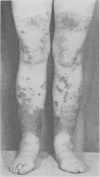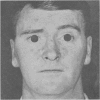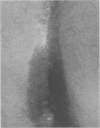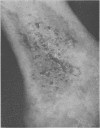Abstract
Observation of the Koebner response was used in the clinical evaluation, determination of prognosis and management of seven patients with psoriasis. The Koebner response may be observed in patients with progressive and eruptive psoriasis; it is not the etiological factor but determines the localization of lesions when a psoriatic reaction is active. The eliciting stimuli for response are varied and non-specific; a common factor is cutaneous injury. Other skin diseases may provoke suitable eliciting cutaneous injury and determine the distribution patterns of sebo-psoriasis, psoriasis inversus, and psoriasiform neurodermatitis. Cutaneous injury is followed by repair or an attempt at repair. Psoriasis is a reaction pattern to non-specific stimuli in which psoriatic defect is brought to light by the increased rate of metabolism in cells regenerating after injury.
Full text
PDF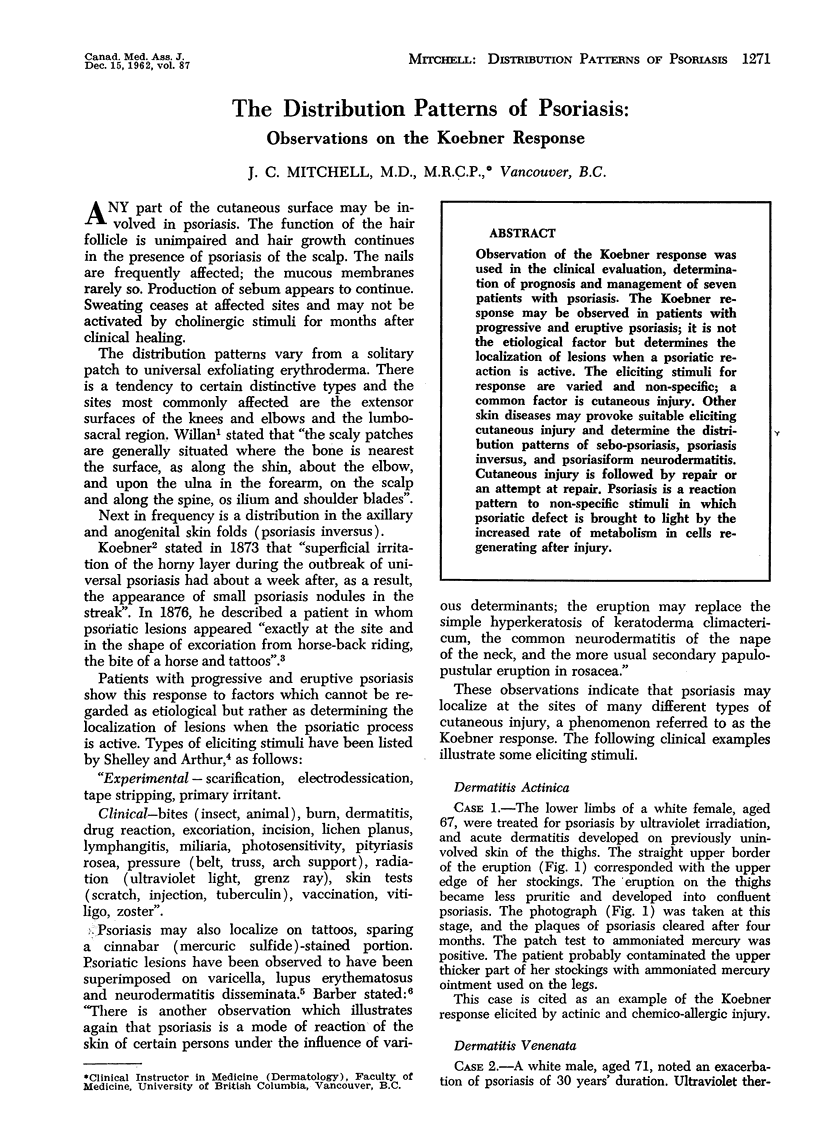
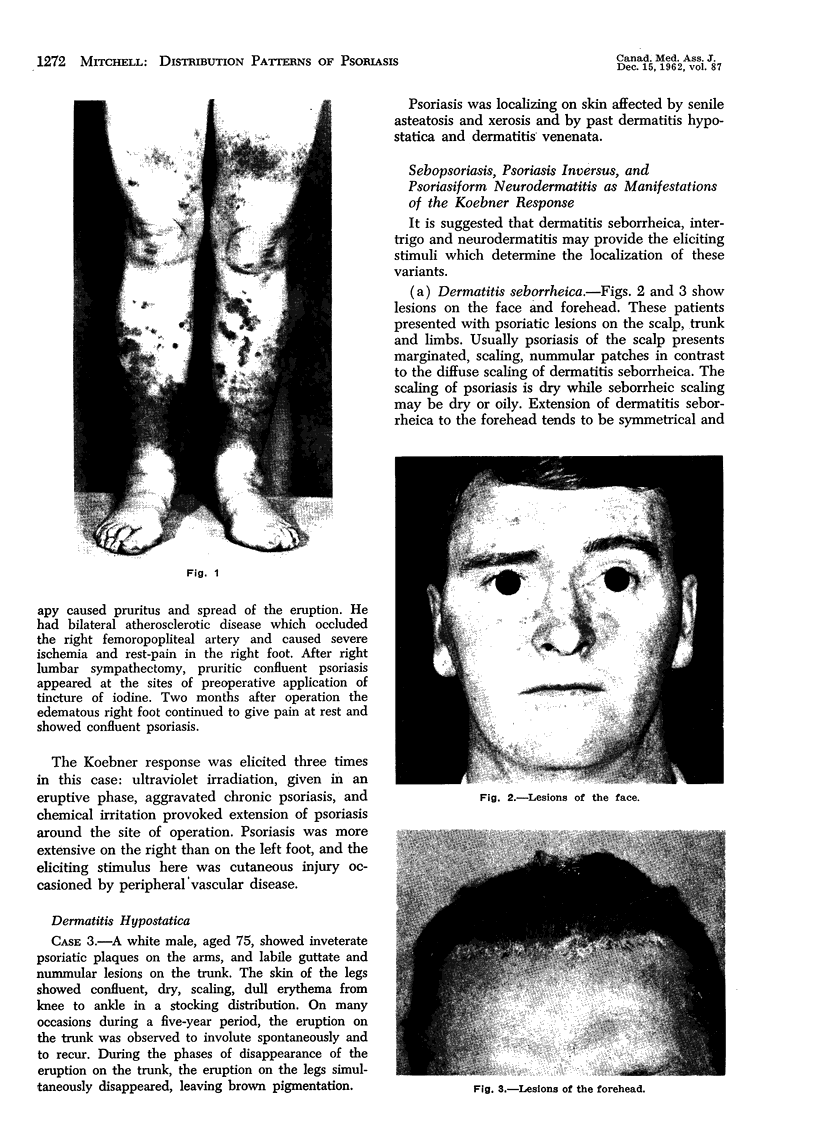
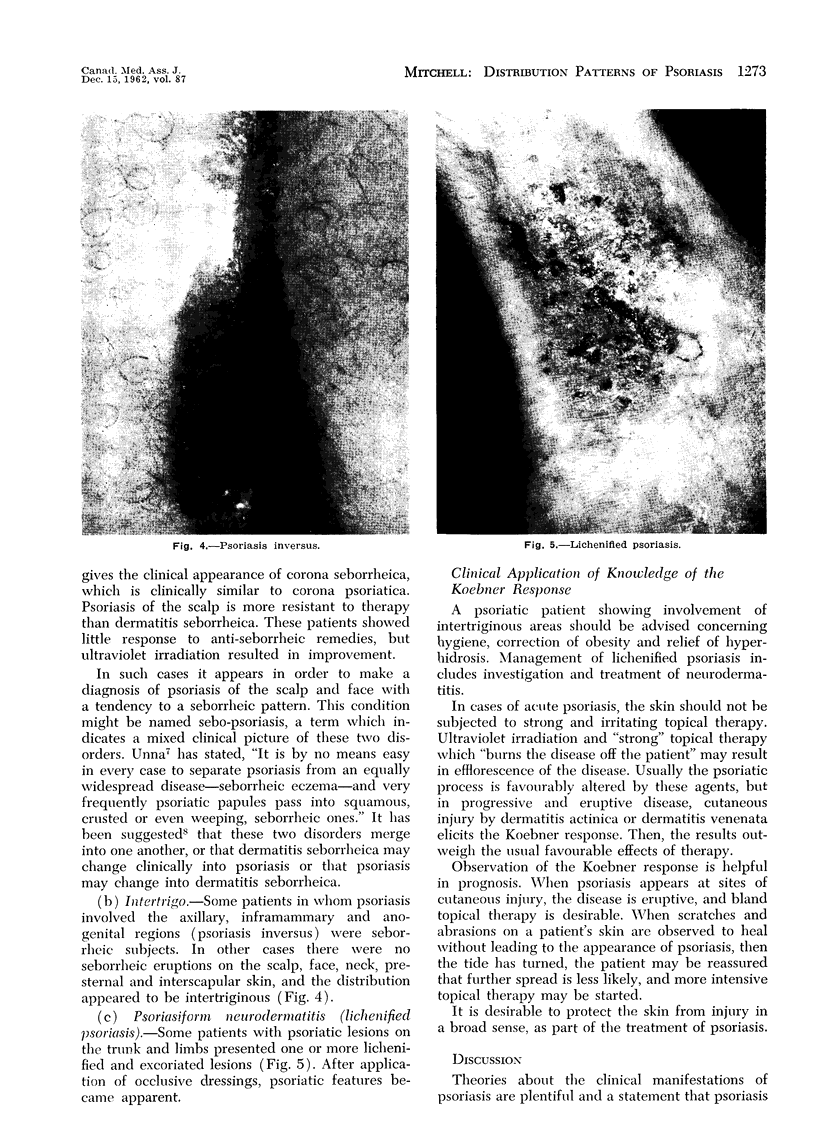
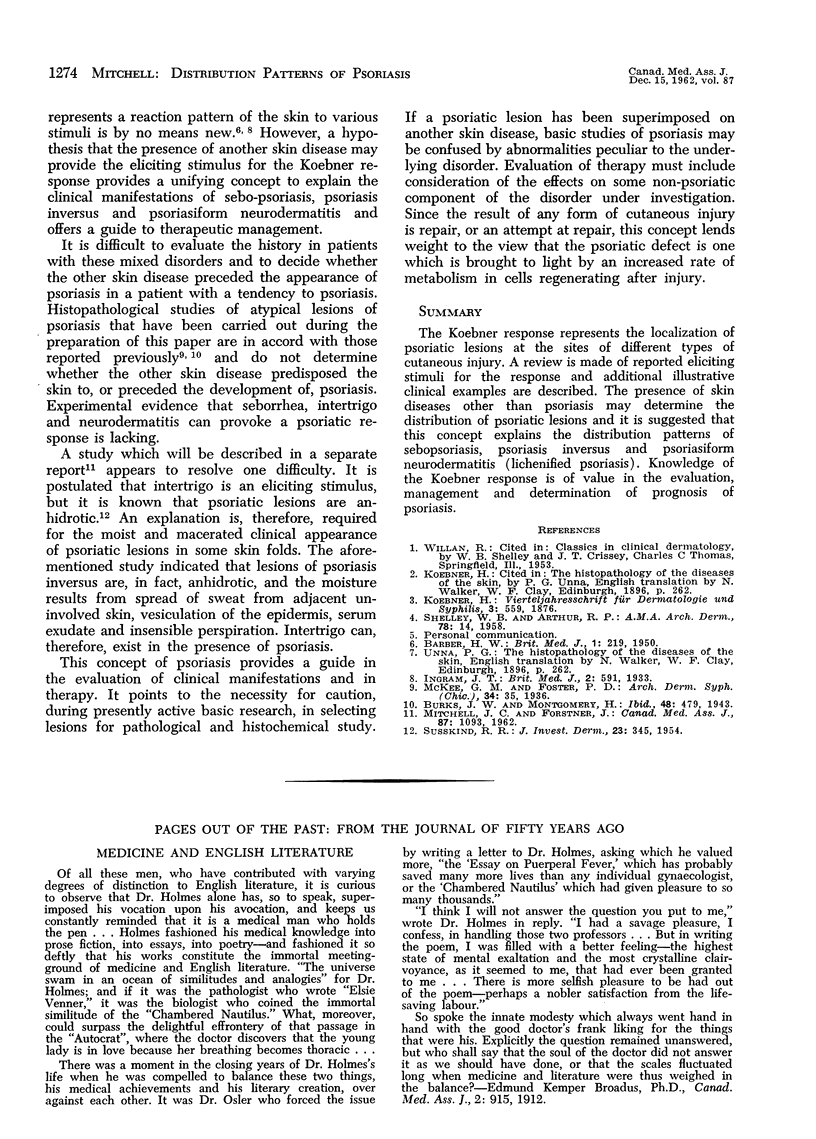
Images in this article
Selected References
These references are in PubMed. This may not be the complete list of references from this article.
- BARBER H. W. Psoriasis. Br Med J. 1950 Jan 28;1(4647):219–223. doi: 10.1136/bmj.1.4647.219. [DOI] [PMC free article] [PubMed] [Google Scholar]
- Mitchell J. C., Forstner J. Eccrine Function in Psoriasis Inversus. Can Med Assoc J. 1962 Nov 24;87(21):1093–1095. [PMC free article] [PubMed] [Google Scholar]
- SHELLEY W. B., ARTHUR R. P. Biochemical and physiological clues to the nature of psoriasis. AMA Arch Derm. 1958 Jul;78(1):14–29. doi: 10.1001/archderm.1958.01560070016003. [DOI] [PubMed] [Google Scholar]



